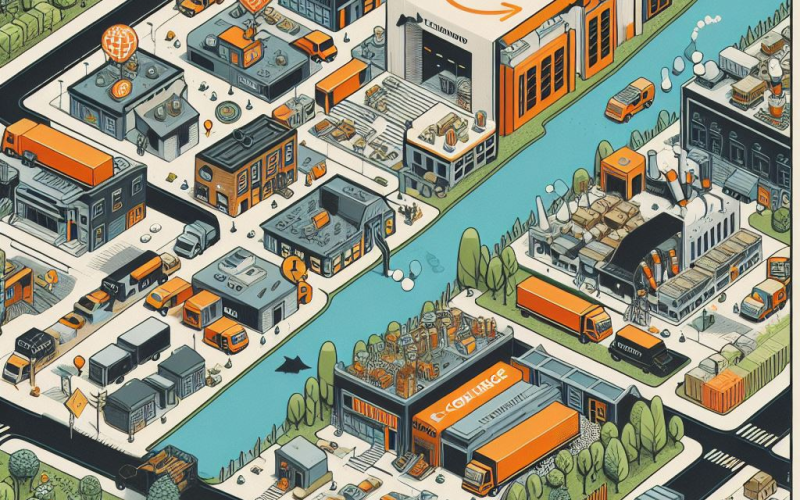Introduction
Welcome to a thought-provoking discussion led by our author, a seasoned environmental activist and urban planner. With years of experience studying the impact of industrialization on local communities, our author brings a wealth of knowledge and a unique perspective to this conversation.
Understanding the E-Commerce Boom
The rise of e-commerce has been nothing short of meteoric. As consumers increasingly turn to online shopping for its convenience and variety, the demand for warehouses to store and distribute these goods has skyrocketed. But what is the cost of this convenience?
The Environmental Impact of E-Commerce Warehouses
E-commerce warehouses, often massive structures covering several acres, have a significant environmental footprint. They contribute to air and water pollution through increased vehicle emissions and waste production. Moreover, they often necessitate the clearing of natural habitats, disrupting local ecosystems and contributing to biodiversity loss.
The Social Impact on Communities
Beyond the environmental consequences, these warehouses also have profound social impacts. Local communities bear the brunt of increased noise pollution and traffic congestion. The influx of heavy goods vehicles can lead to road degradation, while noise from operations can disrupt the peace and quiet of residential areas.

A Community’s Plea: Case Studies
Across the globe, communities are raising their voices against the unchecked expansion of e-commerce warehouses. From protests in small towns to legal battles in city courts, the message is clear: the cost to our environment and our communities is too high.
Sustainable Alternatives to E-Commerce Warehouses
But there is hope. Innovative solutions are emerging that aim to reduce the environmental and social impact of e-commerce. These include urban vertical farming, which utilizes multi-story buildings in urban areas, reducing the need for land and transportation. Another solution is the use of renewable energy sources in warehouse operations, reducing their carbon footprint.
Mobilizing for Change: A Guide for Communities
Communities are not powerless in the face of e-commerce expansion. There are strategies that can be employed to resist the construction of new warehouses, from engaging in local politics to organizing community protests. By coming together, communities can protect their environment and their quality of life.
Conclusion: The Path Forward
The path forward is clear. We must balance the convenience of e-commerce with the need to protect our environment and communities. Through sustainable alternatives and community action, we can create a future where e-commerce and environmental stewardship coexist.
Table: Summary of Key Points
| Heading | Key Points |
|---|---|
| Understanding the E-Commerce Boom | Rise of e-commerce, increased demand for warehouses |
| Environmental Impact | Pollution, habitat destruction |
| Social Impact | Noise pollution, increased traffic |
| Community’s Plea | Global protests, legal battles |
| Sustainable Alternatives | Urban vertical farming, renewable energy |
| Mobilizing for Change | Local politics, community protests |
| Conclusion | Balance between e-commerce and environmental protection |










